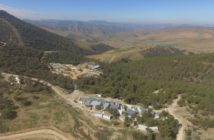Business Monitor International, Sep 2011, Pages: 45
Business Monitor International’s Morocco Agribusiness service provides proprietary medium term price forecasts for key commodities, including corn, wheat, rice, sugar, cocoa, coffee, soy and milk; in addition to newly-researched competitive intelligence on leading agribusiness producers, traders and suppliers; in-depth analysis of latest industry developments; and essential industry context on Morocco’s agribusiness service.
BMI View: New official figures and data from the USDA and the FAO have encouraged BMI to make further changes to their production forecasts for Morocco’s agribusiness sector. In the case of wheat and barley, production growth based on the harvest ending June 2011 outperformed government expectations. Although relatively weak production growth is expected for Morocco’s livestock and dairy sectors in 2011, growth in all sectors will remain positive and is predicted to accelerate from 2012. Production growth will be especially strong for wheat, barley and poultry owing to the steady expansion of Morocco’s economy and rising GDP per capita ratios.
Social unrest and the recent terrorist attack in Marrakech previously led BMI to revise down their growth forecasts for 2011. However, they now believe that increased government spending will prevent a more pronounced downturn. Between 2011 and 2015, BMI predict that Morocco’s annual GDP growth will average 4.7%. BMIs five-year forecasts continue to envisage strong growth in the consumption of poultry, beef, dairy produce and sugar. Demand growth in these segments will benefit from rising living standards and by an expanding population.
Key Forecasts
– Wheat production growth to 2014/15: 46% to 7.11mn tonnes. Wheat is a staple food in Morocco. Production growth will reflect growing demand for wheat as well as ongoing investments in the sector.
– Wheat consumption growth to 2014/15: 19% to 9.91mn tonnes. Morocco is expected to remain highly dependent on wheat imports to satisfy overall demand.
– Barley and corn consumption growth to 2014/15: 25% to 3.82mn tonnes and 26% to 2.52mn tonnes respectively. Consumption of both grains will be driven by increasing demand for animal feed.
– Poultry and beef production growth to 2014/15: 24% to 644,700 tonnes and 20% to 202,300 tonnes respectively, fuelled by strong domestic demand for meat as well as government support for modernisation and expansion initiatives.
– Dairy production growth to 2014/15: Milk: 16% to 2.19mn tonnes; Cheese: 15% to 46,360 tonnes; Butter: 17% to 32,110 tonnes. Growth will be fuelled by rising consumption demand, especially in the case of higher-value dairy products. Production will also benefit from the adoption of more productive technology and the introduction of higher-yielding, quality producing cows.
– Sugar production growth to 2014/15: 10%. This growth is from a weak base and reflects a recent period of negative and stagnant output. Longer-term growth should benefit from targeted support for initiatives such as irrigation, improved farming methods and greater access to inputs such as fertilisers.
– Morocco real GDP growth 2012: 5.1%, up from 4.1% in 2011. Over the longer term, we forecast GDP growth to average 4.7% between 2011 and 2015.
– Morocco private consumption growth 2012: 2.0%, unchanged from 2011. The main driver of headline inflation is food, which accounts for 40% of the consumer price basket.
– Morocco unemployment rate 2012: 8.5%, down from 8.8% in 2011.
Industry Developments
In light of the relative importance of agriculture to Morocco’s economy, the agribusiness sector will continue to benefit from substantial levels of investment In December 2010, Morocco signed a MAD780mn (US$93mn) financing agreement with the EU to support Moroccan agricultural sector policy. The investment will help back the implementation of the Green Morocco Plan, a package of reforms targeted specifically at rural areas. The programme aims to gradually improve the bovine meat, date palm and olive grove sectors, along with other products including local truffles.
In July, the US Grains Council (USGC) signed separate agreements with Morocco’s red meat producers’ association and poultry association to continue working on projects to expand both sectors. BMI maintains its view that Morocco’s livestock industry – especially the poultry and beef sectors – offers considerable opportunity for further investment and development. In recent years, livestock production has already benefited from increased investment as producers look to address growing demand. Demand for poultry has been notably high, with consumption growth reflecting an expanding population and rising GDP per capita. A growing number of fast-food outlets are also boosting demand for processed meats.
Although demand for poultry and beef will partially be met through imports, domestic production also stands to benefit.
Value-added dairy products are also seen as offering opportunities for investment. Over the next few years, demand for cheese, butter and yoghurt is expected to show strong growth. Average annual milk yields are low in Morocco, highlighting investment opportunities in improving dairy production efficiency. Meanwhile, despite concerns about the rising price of major commodities, BMI believes that government interventions in the form of subsidies and stockpiling should help to ensure that consumption demand for basic food products remains steady.
Over the longer term, Morocco has potential to emerge as a key investor in agribusiness elsewhere in Africa. In March, the country’s state-run phosphate monopoly OCP revealed that it had started work on a new fertiliser plant as part of a long-term plan to strengthen its presence and sales to Africa’s underproductive agricultural sector. Although it had been focusing its business development effort on partnerships in Africa. The development and use of fertilisers is viewed as a potential growth area for the next 20-30 years, despite obstacles such as perceived corruption.






